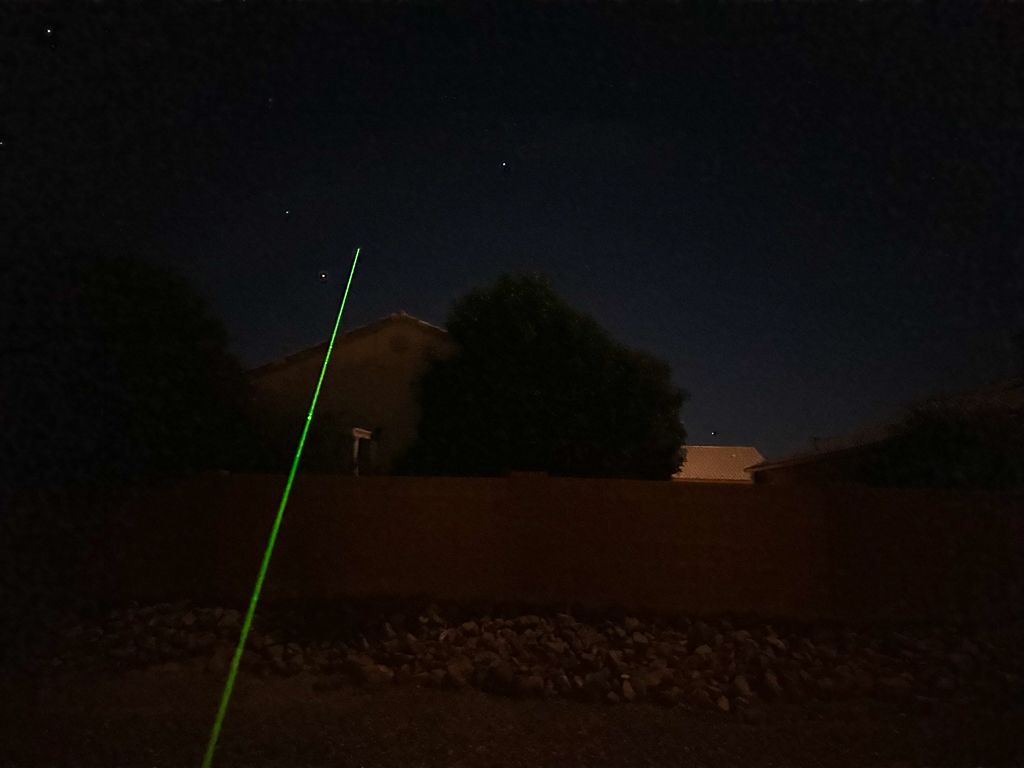Hosting your first star party can be a lot of fun as every amateur astronomer will probably enjoy sharing the night sky with family and friends.
In this guide, we’ll explore the key elements to ensure a successful and enjoyable stargazing event for a small group. From preparing a list of observable objects to creating a comfortable and engaging atmosphere, these tips will help you make your star party a memorable celestial gathering.
Planning Your Observing List
To ensure a successful and enjoyable star party, meticulous planning of your observing list is paramount.
Before the event, curate a selection of celestial objects that are both easy to locate and captivating to observe. Consider including objects such as the Moon, planets like Jupiter and Saturn, and bright stars prominent in the night sky. Saturn is always a stunner at a star party!
Knowing the specific times these objects will be visible is crucial for maximizing the stargazing experience. (Hopefully, you can practice the evening before.)
But on the night of the party, early in the night, focus on observing the Moon and bright planets as they become prominent in the darkening sky. If possible, choose a time when the moon will not be visible in the sky.
As the night progresses and the sky darkens further, consider introducing more challenging objects into your observing list. Distant galaxies, nebulae, and star clusters can offer a deeper exploration of the cosmos. Save these celestial gems for later in the night, allowing guests to gradually adapt to the darkness and fully appreciate the intricate details of these fainter objects.
As you plan your star party, consider the eyepieces, filters, and Barlow lens to minimize frequent changes. Optimize the setup for versatile magnification, ensuring a seamless observing experience. A specific tip is to pre-notate what your telescope will need for certain objects, allowing quick transitions and reducing downtime during the event.

Explain averted vision
Patience becomes a key virtue, especially for newcomers to stargazing.
Take the time to explain the concept of averted vision, a technique where observers direct their gaze slightly away from a faint object to utilize the more light-sensitive peripheral vision. This technique enhances the visibility of fainter objects and enables observers to uncover subtle details that may otherwise go unnoticed.
Highlight the pleasure of slowly discovering these cosmic wonders rather than rushing through the observing list. Encourage participants to take their time, ask questions, and engage in the shared experience of exploring the night sky. Foster a relaxed and enjoyable atmosphere that allows everyone to appreciate the beauty of the cosmos at their own pace.
By incorporating these considerations into your star party planning, you create a well-rounded and engaging stargazing experience for participants. The thoughtful selection of celestial objects, timed observation sessions, and patient guidance contribute to a memorable journey through the night sky, fostering a deeper appreciation for the wonders of the universe.
Equipment and Lighting
Ensuring a conducive environment for stargazing involves strategic lighting choices.
Multiple red flashlights are essential to maintaining dark-adapted vision among your guests.
Unlike white light, red light has minimal impact on night vision, allowing stargazers to observe celestial objects without losing their sensitivity to low-light conditions. Red flashlights are invaluable tools for navigating the observing area, reading star charts, or adjusting equipment without disrupting the overall darkness crucial for optimal stargazing.
In addition to red flashlights, a green laser pointer can prove to be a fantastic asset during your star party. The focused beam of a green laser pointer is visible against the night sky, making it an effective tool for pointing out specific celestial objects.
This is particularly useful when guiding your guests’ attention to noteworthy stars, planets, or constellations. Additionally, allowing guests to try their hand at locating celestial wonders through your telescope with the aid of a green laser pointer can be an interactive and engaging experience.
However, it’s crucial to use laser pointers responsibly and with consideration for safety. Remind guests not to point lasers directly at people or aircraft and to exercise caution when using them. While a green laser pointer enhances the educational and participatory aspects of your star party, emphasizing safety guidelines ensures a positive and secure experience for all attendees.

Cell Phone Etiquette
To ensure an optimal stargazing experience for all participants, it’s crucial to effectively communicate the importance of turning off cell phones during the star party.
The glow emitted by cell phone screens has the potential to hinder dark-adapted vision, making it challenging for stargazers to fully appreciate the beauty of the night sky. Emphasize the significance of preserving everyone’s night vision for a clearer and more immersive celestial viewing experience.
Encourage your guests to bring everything they might need outdoors in advance, creating a self-sufficient and comfortable environment under the stars. This includes essentials such as jackets, blankets, drinks, and snacks. By doing so, participants can minimize the need to go indoors and reduce disruptions caused by additional lighting or noise, allowing everyone to immerse themselves fully in the celestial wonders overhead.
Consider providing designated areas for personal belongings and encourage guests to organize their stargazing setup efficiently. This ensures that everyone has easy access to their essentials, reducing the likelihood of needing to retrieve items from indoors and potentially disrupting the overall stargazing ambiance.
Creating a Comfortable Atmosphere
Understanding that not everyone may share the same level of enthusiasm for astronomy, it’s important to plan a balanced star party that accommodates various interests and ensures everyone has a memorable experience. While stargazing takes center stage as the main focus of the event, incorporating a variety of activities can enhance the overall enjoyment for all attendees.
Consider setting up an outdoor lounge area with comfortable seating and blankets.
This provides a cozy space for guests to relax and engage in casual conversations while taking breaks from stargazing. Provide telescopes with informational cards describing the observed celestial objects, allowing those less familiar with astronomy to gain insights and actively participate in discussions.
In addition to stargazing, consider organizing engaging indoor activities related to astronomy. A brief presentation or a short documentary about the night sky can capture the interest of participants and deepen their understanding of the celestial wonders they are observing. Interactive sessions, such as a constellation identification game or astronomy-themed trivia, can add an educational and entertaining dimension to the event.
Taking a break indoors serves as an opportunity for guests to unwind, share their unique stargazing experiences, and enjoy each other’s company. Offering hot beverages like coffee, tea, or hot chocolate can add a comforting touch, especially on cooler nights. Providing a selection of snacks, ranging from sweet treats (think moon pies and others) to savory bites, ensures there’s something for everyone to enjoy during the break.
Remember, the goal is to create a welcoming and inclusive atmosphere that caters to a diverse group of participants. By incorporating a mix of stargazing, indoor activities, and opportunities for relaxation, your star party becomes not only an exploration of the cosmos but also a social and enjoyable gathering for all involved.
Considerate Lighting in the Neighborhood
If you find that neighboring outdoor lights could potentially interfere with your carefully planned observing area, consider taking a proactive and neighborly approach to address the situation. Approach your neighbors and kindly explain your stargazing plans, expressing your enthusiasm for sharing the beauty of the night sky with friends and family.
Politely request that, for the duration of your star party, they either turn off or dim any outdoor lights that might cast unwanted illumination into your observation space. Emphasize that reducing ambient light helps enhance everyone’s stargazing experience by preserving the darkness needed for optimal celestial observations.
To further foster goodwill among your neighbors, consider bringing a small gesture of appreciation when you approach them. This could take the form of a homemade dessert or another thoughtful token of thanks.
Conclusion
Hosting your first astronomy star party is a delightful way to share the wonders of the night sky with loved ones. By carefully planning your observing list, providing the right equipment and lighting, emphasizing cell phone etiquette, creating a comfortable atmosphere, and being considerate of neighborhood lighting, you’ll ensure a memorable and enjoyable experience for all participants. As you guide your family and friends through the cosmos, you’ll not only foster a love for astronomy but also create lasting memories under the stars.







